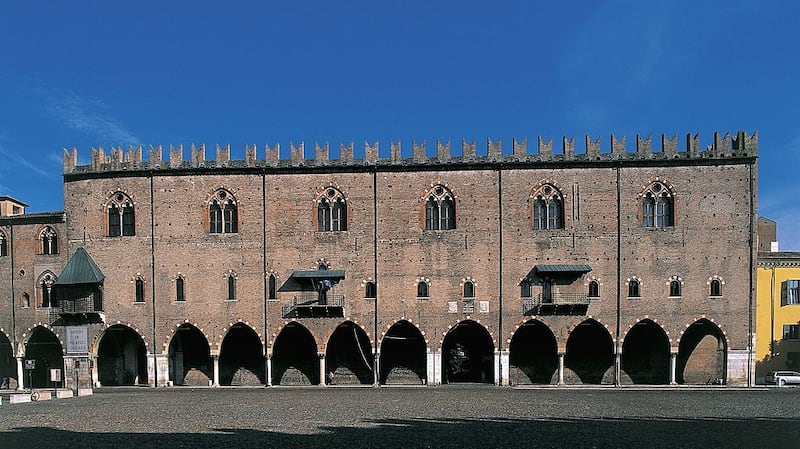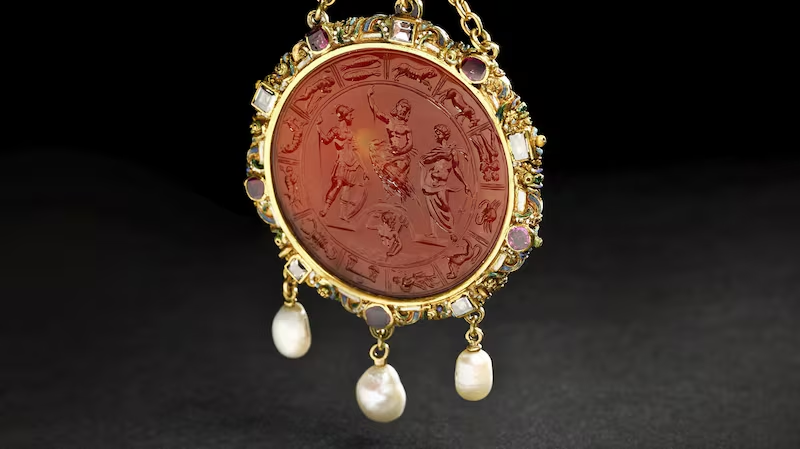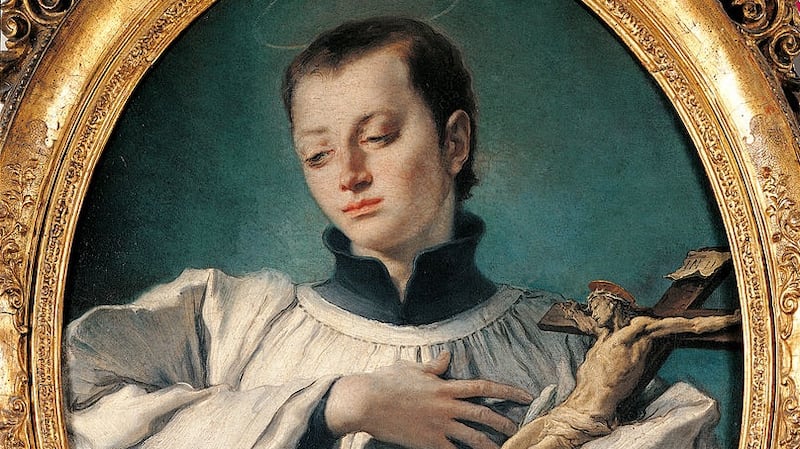An exceptional Renaissance jewel dating from 1540 will be auctioned by Sotheby’s in its Small Wonders: Early Gems and Jewels sale which is currently open and ends on Thursday, July 15th.
The Ducal Palace in Mantua, Northern Italy, which dates between the 14th and 17th centuries, sprawls to 34,000sq m making it the sixth-largest palace in Europe after the Vatican, Versailles, the Louvre, Fontainebleau and Caserta. The Sala dello Zodiaco (Hall of the Zodiac) is considered to be the most interesting of all its 500 chambers. With astronomical frescoes of Diana's chariots pulled by dogs among the constellations painted by Lorenzo Costa the Younger in 1579, it was the bedroom chamber for the Dukes of Gonzaga, and later that of Napoleon Bonaparte during the Napoleonic Wars.

Luigi Gonzaga (Aloysius), who grew up amid the violence and brutality of Renaissance Italy, renounced his inheritance rights to become a marquis at the palace, instead opting to enter religious life. Eschewing sumptuous privilege, he chose the Vatican, where he became a novice Jesuit. Gonzaga died aged 23, still a student in Rome, while caring for victims of an epidemic which he eventually caught himself. He was canonised in 1726 and became the patron saint of young students. His legacy still lives on today at Gonzaga College, the Jesuit secondary school in Dublin.
At that time, the Gonzaga palace was filled to the brim with masterpieces from works by Raphael to Byzantine treasures. In among the jewel collection was a most important piece of Renaissance jewellery: what is today known as the Arundel Zodiac. It is believed to have been created for Federico II Gonzaga, Duke of Mantua in 1540. At the centre of the enamelled gold pendant, set with diamonds and rubies, is a disc of carnelian which relates to a design by Raphael, with intaglio of Jupiter at the centre. It is said that Federico II considered himself descended from the king of the gods and was known to his peers as a terrestrial Jupiter.

The centre piece is encircled by a frieze with the signs of the zodiac, and this was another of Federico’s preoccupations, besides his ego believing he was descended from a Roman god. He slept each night under the gargantuan astrological frieze in his bed chamber and he and other Roman elites believed the science of celestial bodies affected life on earth and the fate of individuals. Though the piece is now on a pendant, it is thought it was originally meant to be worn on a hat, and would have been considered an extremely potent object at the time.
The verso has the enamelling technique of basse taille, with a depiction of a crane with multi-coloured plumage among exotic flowers and laurels. Cranes were symbols of the triumph of good over evil in those times – as the birds ate reptiles they were said to symbolise Christ.

The auction house says the piece “compares with some of the finest surviving Renaissance enamelled jewels in public collections”. Only three such Zodiac gems exist from the period: in the State Hermitage Museum, St Petersburg, the Cabinet des Medailles, formerly the French royal collection and the one on offer at the Sotheby’s sale, which is listed at £120,000-£180,000/ €140,470-€210,710.
The jewel was once part of two incredible gem collections: the Arundel and Marlborough. The piece was acquired by Thomas, the 14th Earl of Arundel in 1636 from the Flemish merchant and connoisseur Daniel Nijs, who brokered the greatest art deal of the 17th century, with the sale of the Gonzaga art collection to King Charles I.
That sale of a hundred paintings, with works of Correggio, Caravaggio and Raphael, is said to have acted like a curse. Within 20 years, everyone involved was dead – including a beheaded Charles I. Thomas Arundel, from whom the jewel takes its name, was as colourful as the art dealer Nijs, who was said to have trafficked arms and intelligence as happily as he did art and status.
Thomas, the 14th Earl of Arundel, was the complete opposite to his forefather the 10th Earl – once voted as one of the worst Britons in history on account of the long-term effect of his success in bringing together church and state and the persecution of unorthodox religious opinion. Instead his heir made his name as an art collector and as a grand tourist rather than as a politician.
He amassed 700 paintings along with books, prints and jewellery. Most of his collection of marble carvings and statues, known as the Arundel Marbles, were bequeathed to the University of Oxford and his paintings, by da Vinci, Holbein, Raphael and Durer, are now in the Royal Library and Windsor Castle.










